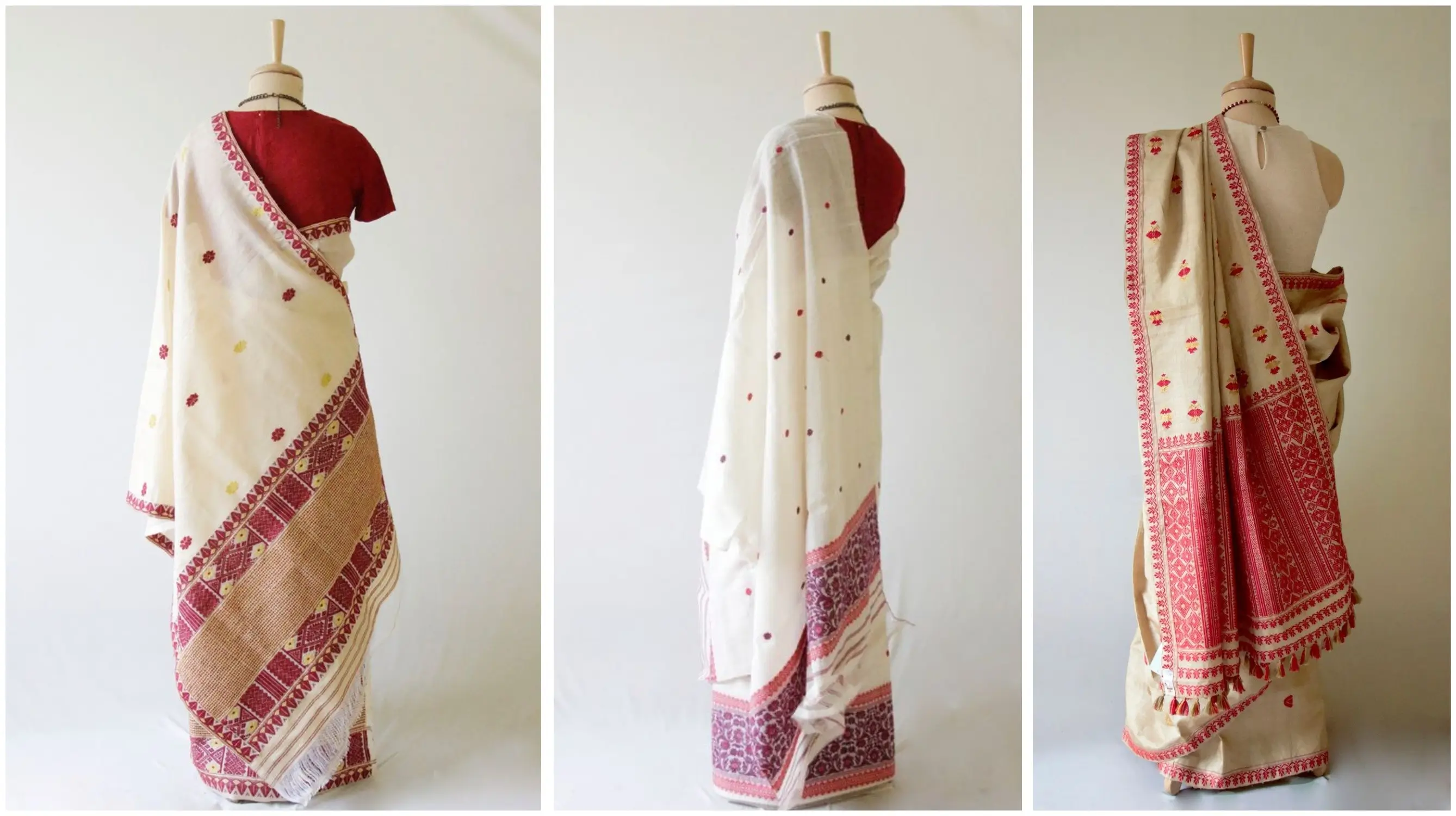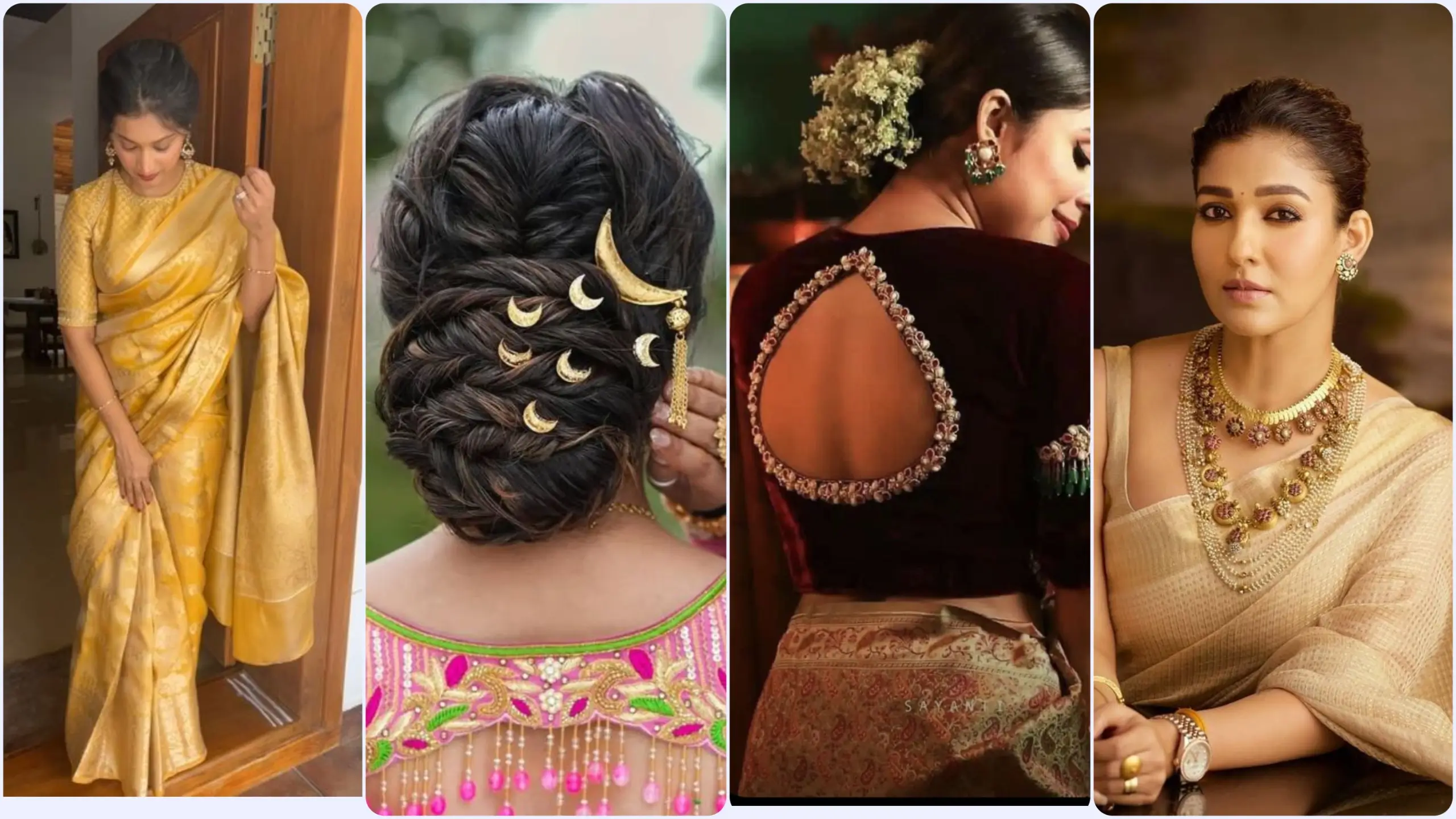Ektara is a century-old handicraft on textiles that is incredibly beautiful and appealing. Through its complex designs and extensive craftsmanship, the ektara weaving technique on banarasi textiles captivates the eye of the beholder. Weavers from Varanasi combined the ektara needlework with rich Banarasi weaves and formed a whole new range of banarasi textiles.
This kind of work has been a staple of the handloom industry for a long time and is still renowned for its exquisite quality and elegance. Want to learn more about this exquisite piece of art and its beauty? Read on to know everything from the experts at Albeli!
[Read more about Everygreen Banarasi Sarees]
What is Ektara work?
Ektara(Ek Taar) is a refined form of needlework. Using this traditional method of weaving, affine fabric with a mesh-like structure and resistance to wrinkling is made. Ektara was referred to as the fabric of kings in earlier times.
Ektara is a weaving technique that has traditionally been used on textiles. It is a form of needlework that involves creating geometric patterns using running stitches on the fabric while weaving. The stitches are made using a long needle, and the threads are pulled tightly to create a raised effect.
Ektara work is typically done using bright and bold colours, and the patterns often include traditional motifs such as flowers and leaves. The weaving style can be employed on a variety of fabrics, including cotton, silk, and linen.
It is made using a Gethua loom with many warp heddle shafts and the Paanch Kaadhi process on a traditional pit loom. One of the finest weaves in Banaras, the Ektara weaving method is frequently used in rangkaat and real zari sarees in addition to other fabrics.
History of origin
Ektara, which means "one string" in Hindi, refers to a musical instrument with a single string that is used by wandering minstrels and bards in the region. The exact origin of Ektara weaving technique is not known, but it is believed to have first originated in the Indian state of Bihar, which has a rich history of textile art and craft. Later on, it was admired and practiced by craftsmen from other parts of the country as well.
Ektara weaving was traditionally done by women from rural and semi-urban areas, who used it to decorate their clothing and household items. The weaving technique was often done in bright and bold colours and was characterized by geometric patterns and traditional motifs.
Over time, the Ektara weaving technique has gained recognition as a unique form of intricate Indian weaving style and has become popular among designers and fashion enthusiasts. Today, it is a thriving handloom industry in Varanasi, providing employment to many skilled artisans and preserving the rich textile heritage of the region.
[Read the story of Banarasi Sarees]
How is the Ektara weaving technique employed on Banarasi fabrics?
Ektara weaving technique can be done on a variety of fabrics, including Banarasi textiles, which are known for their rich and intricate designs. This weaving technique is entirely a handloom process that requires attention to detail and 4-5 people to complete the process, depending on the desired outcome and the skill level of the artisan.
The following steps are typically followed when weaving ektara for Banarasi textiles:
-
Design and preparation: The creation of the pattern that will be woven into the fabric is the first step in the procedure. A designer or master weaver usually does this by creating a sketch or drawing of the pattern. The weaving plan is then made using graph paper after the design has been transferred there.
-
Warping: The next stage is to warp the loom, which entails arranging the threads that will serve as the fabric's warp (the foundation running longitudinally). A good weaver often does this by carefully threading the yarn through the ektara loom.
-
Weaving: After the loom has been warped, weaving can start. The desired texture and design are produced by weaving the weft threads in a particular pattern through the warp threads. The ektara loom makes it possible to design a distinctive pattern that is made up of tiny, raised dots or bumps.
-
Finishing: Following the weaving process, the fabric is meticulously examined and any loose threads or knots are cut out. To give the fabric the desired texture and lustre, it is then cleaned, pressed, and finished.
The weaving techniques, which are used on Banarasi clothing, give the intricate designs that are characteristic of Banarasi fabrics an additional layer of texture and depth. Banarasi outfits with ektara work are simply outstanding!
Types of ektara banarasi attire
Here are some types of Banarasi attire that feature the Ektara weaving technique:
-
Sarees: Banarasi sarees are one of the most popular types of attire that feature the Ektara weaving style. The weaving is typically done on the borders and pallu (the decorative end piece) of the saree, adding an extra layer of texture and dimension to the intricate designs.
-
Lehengas: Ektara weaving technique is also found on Banarasi lehengas, which are long skirts that are typically worn with a matching blouse and dupatta (a long scarf). The weaving is often done on the hem and waistband of the skirt, as well as on the dupatta.
-
Kurtas and Salwar Kameez: Ektara weaving technique can also be used to embellish Banarasi kurtas and salwar kameez, which are traditional Indian outfits consisting of a long tunic and pants or a skirt. The weaving technique is often done on the neckline and hem of the tunic, as well as on the sleeves and dupatta.
-
Dupattas and Stoles: Ektara weaving technique is also employed in Banarasi dupattas and stoles, which are long scarves that are typically worn with a variety of Indian outfits. The weaving is often done along the borders of the scarf, adding an extra layer of texture and detail to the design.
[Read about Best Banarasi Saree Collection]
Final thoughts
For more than three decades, Albeli has been a well-known handloom banarasi saree manufacturer in Varanasi. We are renowned for our distinctive and exquisite collections of all sorts of banarasi sarees, including Ektara banarasi sarees.
Banarasi outfits are recognized for their enduring beauty and elegance. The Ektara weaving technique adds a unique and traditional touch to Banarasi attire, making it even more beautiful and luxurious. These elegant and refined drapes are ideal for a variety of events, including weddings, festivals, anniversaries, ceremonies, etc.
In the handloom industry, Banarasi handlooms are adored and highly valued, and ektara art is the most cherished. So, if you’re an admirer of handicraft sarees, you must get banarasi outfits made using the Ektara weaving style from Albeli’s state-of-the-art collections in your wardrobe.
Start shopping for charming Banarasi sarees, suits, and dupattas in the intricate and beautiful Ektara weaving style from Albeli and show them off with pride!



.webp)


Comments
Leave A Comment: